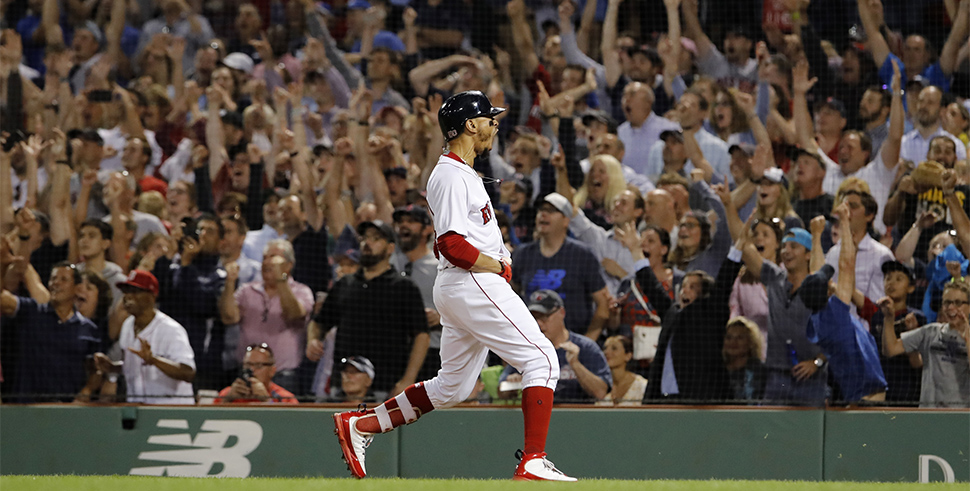The 2018 season is now just a few weeks away, and expectations are mounting once again for the Boston Red Sox. As the defending World Series Champions, a lot is once again expected from a team which is used to playing under pressure. With the powerful New York Yankees once again expected to provide the main threat in the division, the Red Sox will need contributions from the entire roster. However, they need their star players to lead from the front. Last week we looked at what we might expect from J.D. Martinez. This week it is the turn of star center fielder Mookie Betts.
The 2017 or 2018 Version?
If you take a look at the last two years of Betts’ career then you may come away with mixed feelings. After a strong 2016, in which Betts hit 31 home runs with a .318 batting average, 2017 was somewhat underwhelming. In 712 plate appearances Betts managed just 24 home runs and a career low .264 batting average. However, 2018 took things to a new level entirely. Betts finished last season with 32 home runs and a .346 batting average in 614 plate appearances. If you look at the balance of his career, then 2017 is the outlier.
One thing that has been consistent has been his ability to steal bases. The last three years have seen Betts average 27.3 stolen bases. Getting to 30 again in 2019 might be a push, but somewhere between 25 & 30 feels like a safe bet.
The Change in Approach
There is no other way to phrase it that Betts hit the crap out of the ball in 2018. Having never had an average exit velocity above 90 mph, Betts averaged a whopping 92.3 in 2018. Part of that is down to just how cleanly he hit the ball. Prior to last season, Betts averaged a Barrel % of around 5%. Last season that was an incredible 14.1%, the 16th best mark in the majors. If we look at his barrels compared to plate appearances he ranks as high as joint 4th (9.9%). Combine that with a nearly four degree increase in launch angle and the career best HR/PA rate of 5.2% makes a lot of sense.
That increase in exit velocity also explains why we saw a career high batting average. When you hit the ball that hard and that cleanly you are always going to have a chance to have a good batting average. However, expecting another .340 performance might be a stretch. Last season Betts expected batting average was back down at .311. That was second best in the league, behind just Christian Yelich, but it is a long way from that .346 number. In fact Betts had the 20th biggest difference in the between his expected and actual batting average. That kind of separation is unlikely to be sustainable.
One Dimensional?
There is no denying that Betts is a great all around player. However, there is some fear that his hitting has become a little predictable. 2018 saw Betts hit the lowest percentage of balls in his career to the opposite field (18%). Correspondingly, it also saw him get shifted again the most times in his career. In 2018 Betts saw as many plate appearances against the shift as he had in the rest of his career combined. Additionally, nearly 75% of those came in the last three and a bit months of the season. It will be fascinating to see if that trend continues into 2019.
On the plus side, Betts hit the ball so well in 2018 that he actually had a .375 batting average against the shift. However, if some of that exit velocity drops off then Betts could be a victim of the shift next season. Hopefully, both Betts and the Red Sox are aware of the situation and can adjust accordingly if an issue starts to arise.
The Final Expectations
Taking a look at the various different projections available for Betts on Fangraphs a clear patter begins to emerge. The general expectations are around 30 home runs, 25-30 stolen bases, a .300-.310 batting average and at least a combined 200 runs and RBI. They may not be quite as good as 2018, but they are more than good enough from one of your two marquee hitters.
Featured photo courtesy of David Butler II-USA TODAY Sports
